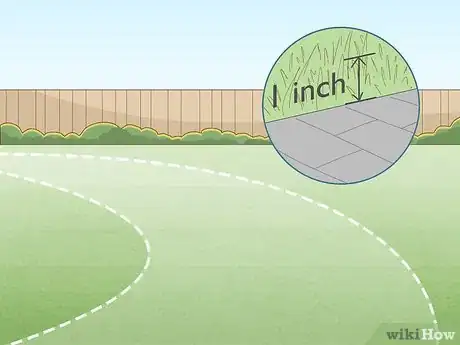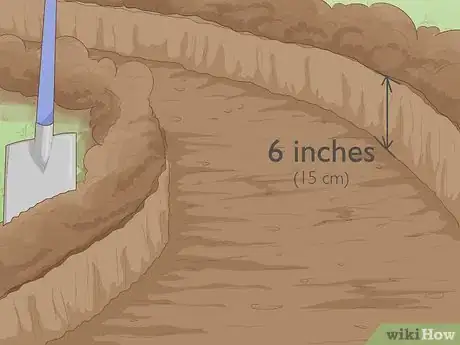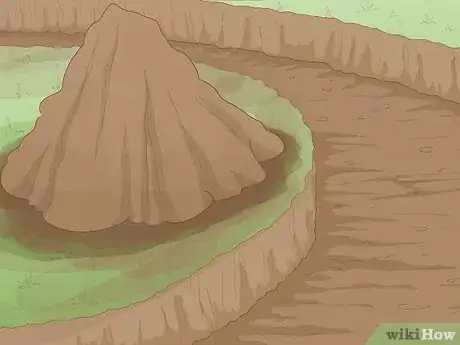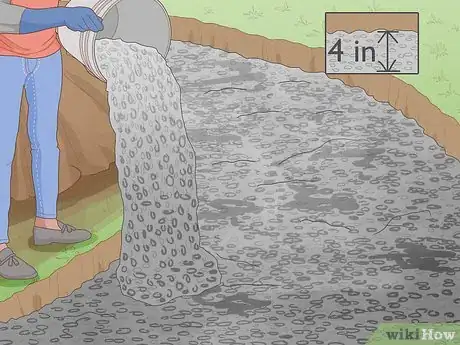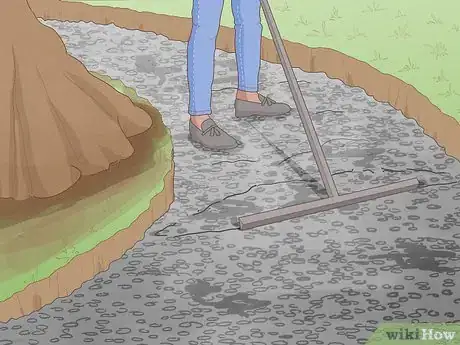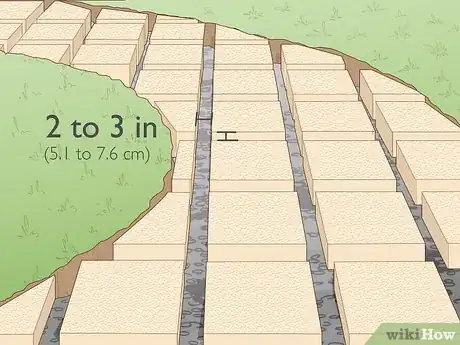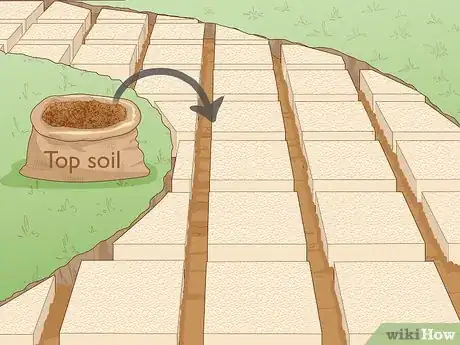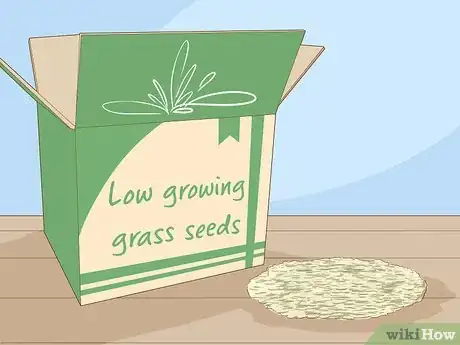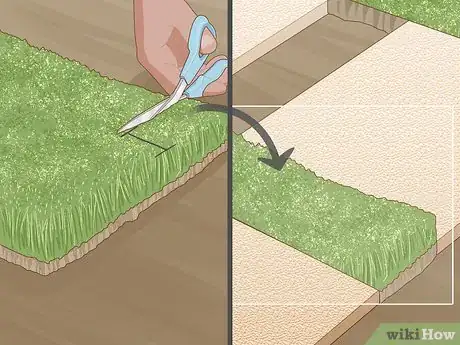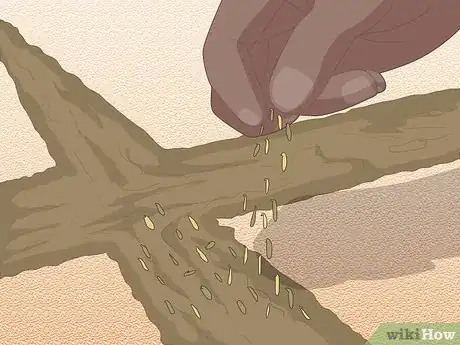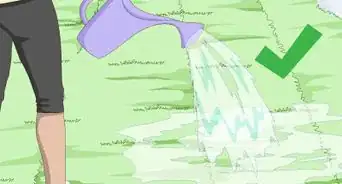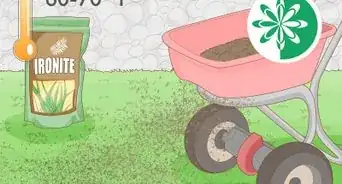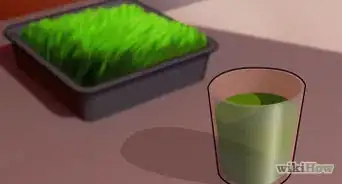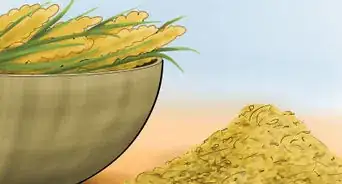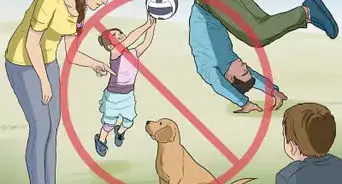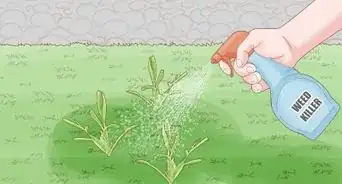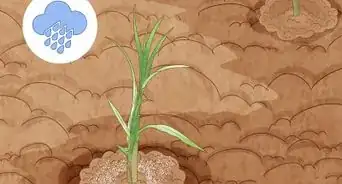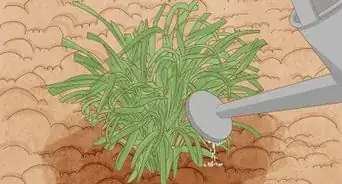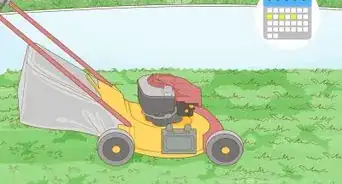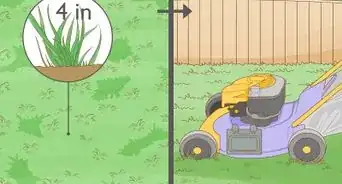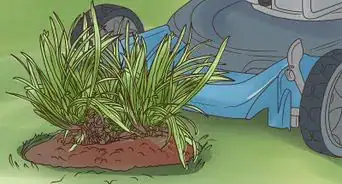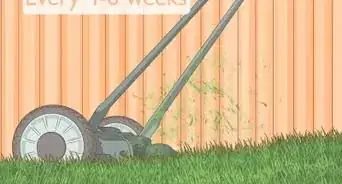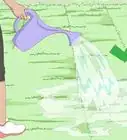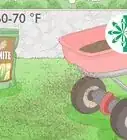This article was co-authored by Scott Johnson and by wikiHow staff writer, Janice Tieperman. Scott Johnson is the Owner and Lead Design Consultant for Concrete Creations, Inc., an award-winning landscape and design company based in the San Diego, California metro area. He has over 30 years of experience in the pool and landscape construction industry and specializes in large estate outdoor environment construction projects. His work has been featured in San Diego Home & Garden Magazine and on Pool Kings TV Show. He earned a BS degree in Construction Management with an emphasis in Architecture and CAD design from Northern Arizona University.
There are 8 references cited in this article, which can be found at the bottom of the page.
This article has been viewed 180,428 times.
If you’re trying to find a happy medium between the grass and pavement on your property, try using separated pavers instead! Start by excavating the area in your yard where you plan on installing the pavers, then filling that space with a thin layer of gravel and topsoil. Next, arrange the pavers in the soil, leaving small gaps between each of the pieces. Once the pavers are in place, set planters or loose seed into the soil. Continue watering and caring for the grass seed to work towards your ideal yard!
Things You Should Know
- You must leave 2–3 inches (5.1–7.6 cm) of space between your pavers to give the grass enough room to grow.
- Fill in the gaps between your pavers with topsoil and compost to give your grass a healthy, nutrient-rich environment to grow.
- You can either plant from seed, or trim a pre-seeded grass with utility scissors and lay the grass down in between the pavers.
Steps
Excavating the Area and Laying Gravel
-
1Decide how high you’d like your pavers to be in the soil. Measure your pavers ahead of time to determine how much space they’ll take up in the soil. You don’t want to rest them on top of the soil, as this will make it more difficult to plant grass between each paver. Instead, use a ruler or tape to measure the height of your pavers, so you can have a better idea of how you’ll arrange them on your property later on.[1]
- Jot the measurement down on a separate piece of paper, or record it in your phone so you don’t forget it later.
-
2Dig up the area where you plan to install the pavers. Use a spade or large shovel to dig 6 inches (15 cm) into the soil. Don’t just dig small holes around the area—instead, take time to excavate the entire area. Since you’ll be layering gravel and soil beneath the pavers, you need to dig up enough space on your property.[2]
- While this might seem excessive, the area needs to be deep enough for plant seeds to form roots later on.
- If you’re excavating a large area of property, consider renting professional equipment to help dig up the area.
Advertisement -
3Collect the dirt in a large pile at the side of your property. As you dig 6 inches (15 cm) into the soil, dump the loosened dirt into a pile at the side of your excavation area. Don’t get rid of the soil altogether, as you’ll be reusing when you install the pavers. If you’d prefer, you can also use a wheelbarrow or similar container to collect the soil.[3]
- Try to have a pair of gloves on hand whenever you do intense gardening work.
-
4Fill the excavated area 4 in (10 cm) with gravel. Open a bag of gardening gravel and drizzle it across the bottom of the excavated area. Aim for the gravel to be around 4 inches (10 cm) thick, so it can provide a firm support to the pavers. If you’re planning to use the pavers for heavy duty tasks, consider making the gravel layer even thicker.[4]
- For instance, if you’re setting up your grass pavers to be used as a driveway, you might want to make the gravel 5 inches (13 cm).
- Try not to fill up the entire space with gravel. While you want a firm support for your pavers, you don’t want the pavers to be resting above surface level.
- You can find a compactor at a home improvement store.
-
5Flatten out the gravel with a plate compactor so it stays in a nice and level. To use a gas-powered plate compactor, grip the throttle lever between your first and middle finger and pull it downwards. Next, slowly tug on the operating cord to lubricate the engine, then pull on the cord quickly to start the machine. If you’re using an electric plate compactor, just press the power button to turn the equipment on.[5]
- If you don’t have compacting equipment, consider investing in a hand tamper to compact the gravel manually.[6]
Positioning the Pavers
-
1Arrange the pavers 2 to 3 in (5.1 to 7.6 cm) apart. Take your pavers and place them your desired design, keeping them all separated from one another. Try to evenly space all of the pavers, so your yard or outdoor area can look as uniform as possible.[7]
- If you don’t leave enough space between the pavers, then the seeds won’t have any room to grow.
-
2Layer the topsoil in the gaps between the pavers. Take your loose soil from before and scoop it over the paver gaps with your hands or with a small spade. Continue adding soil until it completely fills in the gaps. Make sure that the soil is loose, so the seeds can form roots more easily.[8]
- If the soil is too tight, then it will be more difficult to arrange the seeds and get fruitful germination.
- Depending on how much gravel you put down, you could be adding at least 1 to 2 inches (2.5 to 5.1 cm) of soil.[9]
-
3Protect any bare spots around the pavers with a layer of compost. Take a small amount of compost and place it over the corners, edges, and any other bare spots of the pavers that don’t have top soil. Layer the compost on in small amounts to help seal in the moisture at the soil’s surface.[10]
- If you don’t have any compost on hand, feel free to use a light soil instead.
Planting the Grass
-
1Choose a low-growing seed to plant between your pavers. Decide if you want to use regular grass seed, or if you’d like to try another low-growing field seed. Evaluate the area where you’re planning on placing the planters and seed. Is it in a sunny area, a partly sunny spot, or a shady area? Depending on where you live, you might want to consider low-growing seeds besides lawn grass.[11]
- If you live in an especially sunny area, opt for plants like dymondia or creeping thyme.
- If you live in a partly sunny place, pick chamomile, jewel mint of Corsica, Irish moss, or blue star creeper seeds.
- If you live in a shady area, go for mondo grass, sweet woodruff or baby’s tears seeds.
-
2Trim a pre-seeded grass planter to fit in the narrow gaps. Remove flat chunks of pre-planted grass and remove them from their container. Use a pair of utility scissors to cut these chunks of soil into sections that are 2 to 3 inches (5.1 to 7.6 cm) sections wide. Place these sections of seeds and roots directly into the gaps.[12]
- This is a great option if you want your soil to appear green right away.
-
3Spread plant seeds over the soil if you don’t mind waiting. Check the label on the seed bag to see how many seeds you need to spread over a certain amount of space. Toss a small amount of seeds into the topsoil, making sure to cover all of the gaps between the pavers.[13] Once the seeds are in place, use a small rake to mix them into the soil below.[14]
- You won’t see results right away if you plant the seeds manually. However, this is a better option if you aren’t planning traditional grass seed.
-
4Water the seeds on a regular basis until they’ve fully sprouted. Fill a watering can with cool water and pour it over the soil on a daily basis, or several times throughout the week. If you’d rather not worry about watering the seeds by hand, try setting up an in-line drip or sprinkler system to keep your grass hydrated.[15]
Expert Q&A
Did you know you can get expert answers for this article?
Unlock expert answers by supporting wikiHow
-
QuestionHow do I get rid of grass growing between pavers?
 Scott JohnsonScott Johnson is the Owner and Lead Design Consultant for Concrete Creations, Inc., an award-winning landscape and design company based in the San Diego, California metro area. He has over 30 years of experience in the pool and landscape construction industry and specializes in large estate outdoor environment construction projects. His work has been featured in San Diego Home & Garden Magazine and on Pool Kings TV Show. He earned a BS degree in Construction Management with an emphasis in Architecture and CAD design from Northern Arizona University.
Scott JohnsonScott Johnson is the Owner and Lead Design Consultant for Concrete Creations, Inc., an award-winning landscape and design company based in the San Diego, California metro area. He has over 30 years of experience in the pool and landscape construction industry and specializes in large estate outdoor environment construction projects. His work has been featured in San Diego Home & Garden Magazine and on Pool Kings TV Show. He earned a BS degree in Construction Management with an emphasis in Architecture and CAD design from Northern Arizona University.
Landscape & Design Consultant After you dig the grass out, powerwash your pavers without blowing the layer of sand away. Then, use a paver sealing product to cover the gaps between the pavers. There are 3-5 paver sealants out there, but they all work more or less the same. Reseal your pavers every fall or spring before it starts raining a lot and you won't see any grass or weeds popping up between the pavers.
After you dig the grass out, powerwash your pavers without blowing the layer of sand away. Then, use a paver sealing product to cover the gaps between the pavers. There are 3-5 paver sealants out there, but they all work more or less the same. Reseal your pavers every fall or spring before it starts raining a lot and you won't see any grass or weeds popping up between the pavers. -
QuestionCan I use Buffalo grass?
 Community AnswerYes, it's a pretty good low grass. It can be clumpy even in tight areas, but definitely see if it works for you and in your area.
Community AnswerYes, it's a pretty good low grass. It can be clumpy even in tight areas, but definitely see if it works for you and in your area. -
QuestionHow do I cut this grass and keep it short?
 Community AnswerJust lower the mower to its lowest setting. If that's not short enough, then you'll need to use a string trimmer. In order to keep the grass healthy and not scalp it, your dirt should be at the bottom of the pavers or the pavers should just lay on top of the dirt.
Community AnswerJust lower the mower to its lowest setting. If that's not short enough, then you'll need to use a string trimmer. In order to keep the grass healthy and not scalp it, your dirt should be at the bottom of the pavers or the pavers should just lay on top of the dirt.
Things You’ll Need
- Spade
- Large shovel (optional)
- Gloves
- Gravel
- Plate compactor
- Hand tamper
- Compost
- Flat planters (optional)
- Plant seed
- Water
- Watering can
References
- ↑ https://extension.oregonstate.edu/sites/default/files/documents/1/howtoinstallpavers.pdf
- ↑ Scott Johnson. Landscape & Design Consultant. Expert Interview. 8 April 2020.
- ↑ https://extension.oregonstate.edu/sites/default/files/documents/1/howtoinstallpavers.pdf
- ↑ Scott Johnson. Landscape & Design Consultant. Expert Interview. 8 April 2020.
- ↑ http://74f85f59f39b887b696f-ab656259048fb93837ecc0ecbcf0c557.r23.cf3.rackcdn.com/assets/library/document/2/original/2014-05_safe_use_of_plate_compactor.pdf
- ↑ https://m.youtube.com/watch?v=RKHfCrnnr54&t=0m40s
- ↑ https://www.gardenista.com/posts/everything-need-know-grass-block-pavers/
- ↑ https://www.gardenista.com/posts/everything-need-know-grass-block-pavers/
- ↑ https://extension.oregonstate.edu/sites/default/files/documents/1/howtoinstallpavers.pdf
- ↑ https://www.gardenista.com/posts/hardscaping-101-ground-covers-for-garden-paths-plants-between-pavers/
- ↑ https://www.gardenista.com/posts/hardscaping-101-ground-covers-for-garden-paths-plants-between-pavers/
- ↑ https://www.gardenista.com/posts/hardscaping-101-ground-covers-for-garden-paths-plants-between-pavers/
- ↑ https://www.gardenista.com/posts/everything-need-know-grass-block-pavers/
- ↑ http://www.bbc.co.uk/gardening/basics/techniques/lawns_sowlawn1.shtml
- ↑ https://www.gardenista.com/posts/hardscaping-101-ground-covers-for-garden-paths-plants-between-pavers/
- ↑ https://www.gardenista.com/posts/everything-need-know-grass-block-pavers/
- ↑ http://www.bbc.co.uk/gardening/basics/techniques/lawns_sowlawn1.shtml
- ↑ https://www.smilinggardener.com/organic-pest-control/how-to-get-rid-of-moles-and-voles/
